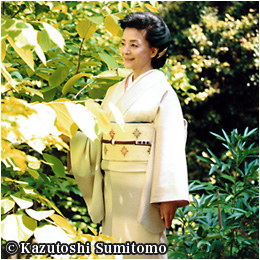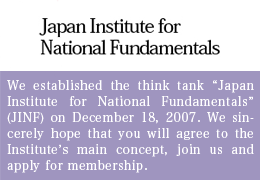Why They Poisoned Ornamental Japanese Carp at the Shanghai Expo
The Shanghai Expo 2010 – China’s major stepping stone for its next great leap forward – closed on October 31, attracting a record total of 77,070,000 visitors from around the world over the six months it was open. The Shanghai attendance figure easily surpassed the previous World Expo record of 64,220,000 set by Osaka in 1970. Praising the event as a resounding success, the Chinese government announced that China will “walk a path to peaceful development and further opening-up, as it pursues solidarity with the nations of the world with firm confidence and resolution.” However, an incident occurred at the end of the exhibit which contradicted these fine words and was sadly emblematic of today’s China.
The incident involved five brocaded Japanese carp, known in Japan as Nishiki-goi, which were disposed of with poison by the Expo organizers on the night of October 15. The carp had been sent from the village of Yamakoshi in Nagaoka City, north-central Niigata Prefecture.
Details have since been revealed by Kunitoshi Takano (42), who was in charge of exhibiting the carp during the Expo. He has 20 years of experience in raising the varicolored carp – a trade he picked up from his father, who has been in the business over 60 years. Takano is head of the Youths Section of the Association of Carp-Raisers in Nagaoka City (hereafter “the Association”) in Niigata Prefecture. Explains Takano:
“Initially, we learned from the organizers that live animals were excluded from exhibitable items, but we were subsequently informed that they would allow an exception this time and permit us to exhibit five carp. Nagaoka City authorities informed us of the exception around May this year and we swung into action immediately to prepare for the exhibit. At the outset, we understood that the Chinese side would not allow us to bring them back to Japan, so we decided that, after the scheduled three-day exhibit ended on October 15, we would either donate the carp to a public facility or present them to a local decorative fish dealer. We were prepared to cover a large expenditure on our part, including shipping, and chose five especially gorgeous-looking carp, convinced they would well represent Yamakoshi – and Japan, for that matter.
Yamakoshi was a small village traditionally known also for its Yamakoshi beef which is often compared to the internationally famous Kobe beef. Six years ago, when the “Chuetsu Big Quake,” magnitude 6.9, jolted village, the bottoms of most of the village’s carp ponds sustained gaping cracks, draining the water and leaving hundreds of carp dead. Deeply saddened by the loss of their carp to an untimely natural disaster, which they had farmed with the same love and care as they would bring up their own children, the carp farmers of Yamakoshi cherished the few carp that survived the disaster, and worked hard to maintain the tradition of carp farming – their pride and joy.
On October 12, the five carp were delivered to the Chinese side as promised. The Japanese delegation, headed by Hisato Nogami, who runs the Nogami Carp Farm, was made up of five members of the Association, accompanied by a reporter from the “Monthly Varicolored Magazine.” They began preparations for the carp exhibition starting at midnight on the same day, finished assembling a cistern at a special event hall inside the Japanese pavilion a little past 5 a.m. the following day, and released the carp. The exhibition began following the opening ceremony that same day and became an instant success. Explains Nogami:
“They Have Some Disease So We Must Finish Them”
“Some of the Chinese visitors asked if the brocaded carp were fit to eat, but many also marveled at their elegant beauty. The exhibition space itself was barely the size of a full tennis court and was too jammed to move an inch, with 26,000 visitors in just two and a half days. We closed the exhibition and had just four hours to tidy up and evacuate the space to give way to the next exhibitor – the City of Kyoto.
“Just at that moment, quite abruptly, several Chinese walked in, ordering everyone except us out. They then surrounded the pool where the carp were and began quite pompously pointing to the carp and declaring, ‘These fish have some disease, so we must kill them.’ Without thinking, I shot back, ‘These fish don’t have any kind of disease. Isn’t that what your government recognized in the first place – when they were quarantined at the time of their entry into China?’ But my words fell on deaf ears as they repeated that the carp ‘had some disease.’”
A heated argument ensued, with Takano and his men getting increasingly excited. Finally, Takano raised his voice and snapped: “You’ve got to be kidding me. For God’s sake, why don’t you folks stop talking nonsense. Killing these carp would be ridiculous and inhumane!”
At that instant, sensing further argument would be of no use, Takano’s colleagues prevented him from engaging the Chinese further, saying “Let’s call it quits, we are not getting anywhere, Takano-san.” One of Takano’s colleagues was even crying. Ignoring them, the Chinese started pouring liquid chemicals into the pool.
“The five carp began quivering convulsively, but it was too late and there was nothing we could do to save them,” recalls Takano. Vexed, saddened, and humiliated, Takano was too stunned to remember what he did or said to the Chinese afterwards.
The carp exhibit came about thanks to Nagaoka mayor Tamio Mori, who made extra efforts to get the carp exhibited, despite the Expo rule prohibiting the exhibits of live animals. Mori strongly wanted visitors from around the world to admire the gorgeous elegance of the brocaded carp from Yamakoshi. He talks of the carp as “the treasures of Nagaoka – and of Japan by the same token,” further describing them as “swimming jewels.” Mori sincerely hopes Niigata Prefecture will be able to help the Chinese come to appreciate the marvels of the brocaded carp, eventually gaining momentum for the expansion of colored carp sales networks across China.
Niigata is Japan’s main hatching center for brocaded carp, exporting approximately 80 percent of Japanese carp to the U.S., Europe and Asia, including Thailand, Malaysia, Indonesia and Taiwan. Although direct export routes to mainland China have yet to be established, Japanese brocaded carp have actually been exported to China via Taiwan and Hong Kong. Mori says the demise of the carp in Shanghai is unfortunate, but stresses the fact that the exhibition was meaningful in that it laid down the groundwork for future exports of brocaded carp to China.
Meanwhile, Nagaoka city officials explain that the carp earmarked for the Shanghai exhibit had been shipped to Shanghai on the condition that they would be “disposed of” following the event, explaining that it was so stipulated in the contract. In other words, the city says that killing the carp would have been one means of disposal in keeping with the condition of the contract. But Nogami and his men disagrees:
“There was no condition that the carp would be killed. We never signed a contract. The only thing we were aware from the very beginning was that we would not be allowed to bring our carp back to Japan. That we thought would be all right, because we believed we would be able to leave them in the loving care of some Chinese people there.”
Nogami adds: “Despite all this, however, I couldn’t really accuse the Chinese men who poured the chemicals into the pool to kill the carp that night. Obviously, they were under orders to do so. As a matter of fact, I understand some of them later called to extend their apologies.”
Self-Defense: The Only Rational Solution
Nogami did not hear the words of apology straight from the horse’s mouth, but from his Chinese translator who told him that the men had called. Realistically speaking, it is highly unthinkable that Chinese bureaucrats should apologize to anyone for acts committed under instructions from their government. However, Messrs. Nogami and Takano maintain they have decided to take the apology, relayed through their translator, at its face value. Remarks Takano:
“Actually, the whole sequence of the October 15 happening has been video-taped, as well as photographed. We have since discussed among ourselves whether or not we should release the video publicly. But Nogami-san, who is the director of our bureau, thinks we better not.” Adds Takano with a wry smile, “It smacks of a mini ‘Senkaku Incident,’ doesn’t it?” Continues Nogami:
“The scenes we shot surely include that of them pouring liquid chemicals into the pool. But I no longer have any interest in seeing them. I don’t want to even recall the incident. By releasing the images of our precious carp being killed, I do not particularly wish to cause friction with the Chinese and have a quarrel with them. We are still very sincere in our desire to form a close relationship with them, and believe that they will someday be awakened to the realization that there has been something very bizarre with the way they have been doing things.”
But one has to wonder if there will ever be a day when such tender-heartedness of the people in Niigata could be understood by their Chinese counterparts. Well known commentator Hideaki Kase recently collaborated on a book with Seki Hei, a Sichuan-born Chinese who graduated from the University of Beijing in 1984 and became naturalized in Japan in 2007. In the book, entitled “China and Japan: A World of Difference” (Jiyu–Sha;Tokyo), Kase notes:
“In the wide expanse of pre-war China, there were many multi-millionaires across the country including Shanghai, but even to this day there is not a single Western museum in the nation.”
The Chinese are passionate about Western music, but when it comes to the fine arts, they do not acknowledge the value of great European masters like Vincent Gogh, Paul Cezanne, and Pierre-Auguste Renoir, or the equally refined masters of Japanese arts like Utagawa Hiroshige and Kitagawa Utamaro (ukiyoe), Yokoyama Taikan (painting), or Munakata Shiko (mingei pottery). It is Kase’s forthright analysis that the Chinese simply do not recognize the greatness of anything outside the Chinese arts.
Pouring chemicals over a school of elegantly swimming brocaded carp is abnormal by any standard. Wouldn’t such abnormality possibly be because the Chinese are somehow incapable of perceiving the “beauty and loveliness” that the Japanese feel so close to heart every time they see brocaded carp – or any other types of small living creatures for that matter? Or, could it be because the Chinese may possibly be incapable of any attachment to small living things? Instead of letting the tragedy of the five Niigata carp in Shanghai pass into oblivion, vainly hoping that the Chinese will someday change somehow, it seems to me that a more rational solution would be to never forget what happened in Shanghai on October 15, and try and do our best to protect ourselves, so that we will not experience something similar in dealing with our recalcitrant neighbor in the future.
(Translated from “Renaissance Japan” column No. 437 in the November 25 issue of The Weekly Shincho)








